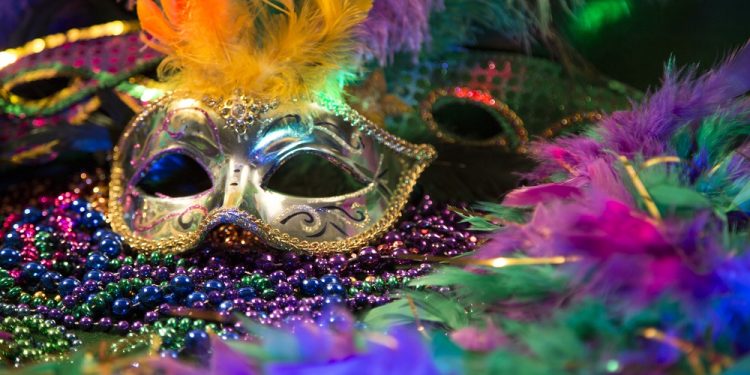
Mardi Gras
History
To understand the history of Mardi Gras, it is important to understand its Christian roots. As is the case with many modern holidays, Mardi Gras was born from the ancient Roman pagan festival, Lupercalia. Lupercalia was a carnival-like celebration held in February that was similar to today’s Mardi Gras celebrations.
As the Romans began to embrace Christianity, the church sought to incorporate existing celebrations rather than eliminate them, reasoning that doing so would make the new faith easier for the public to accept. Lupercalia became a sort of last hurrah before Lent, the Christian period of self-denial beginning with Ash Wednesday and leading up to Easter.
The final day before Ash Wednesday and Lent is now known as Fat Tuesday and is the pinnacle of Mardi Gras celebrations. Fat Tuesday is always 47 days before Easter. Mardi Gras has been celebrated as a major holiday in Paris since the Middle Ages.
It was brought to the New World by the French explorer Iberville. The practice of throwing lavish masked balls before Lent was common in New Orleans during the 1700s but was banned when the area fell under Spanish control. Once New Orleans became a part of America, people began to petition for the right to continue the custom. That right was granted by the Governor in 1827.
Early celebrations were fraught with violence, and many called for them to be ended. A group known as the Comus organization was founded in 1857 and changed public opinion by adding beauty, class, and safety to the festivities. They were the first organization to identify themselves as a krewe.
There are now more than 60 krewes active in New Orleans. Today’s krewes host all manner of Mardi Gras festivities, especially parades and balls. They are based on everything from ancient mythical figures to modern science fiction Wookiees. Despite numerous disruptions throughout the years, Mardi Gras in New Orleans is now firmly established and here to stay.
Mardi Gras in New Orleans
It doesn’t take a special occasion to have a good time in the heart of the bayou. New Orleans, also known as The Big Easy, is a vibrant city full of music, life, color, and soul year-round. The historic French Quarter, antebellum Garden District, bustling downtown, and laid-back Riverwalk all hold endless hidden treasures of days gone by and good times to come.
The whole city drips with a beautiful culture you will not find anywhere else in the world. It is like its own country, a unique jewel in the crown of Lady Liberty. But if you go to New Orleans looking for a good time and want a special occasion to do it, there’s no time like Mardi Gras.
Mardi Gras has gained a reputation over the years as ground zero for debauchery. Unfortunately, there is much more to this rich and beautiful tradition than what is portrayed in the media and elsewhere.
Many public events around the city are very family-friendly, and many are tailored to entertain children more than adults. In general, those looking for rowdy celebrations should stick to the Bourbon Street area at night, and those looking for family fun should avoid the French Quarter after dark.
Tips and Information
If you are interested in experiencing Mardi Gras for yourself, below is some information and advice you might consider before beginning your journey:
Parades
Parades are typically held throughout February in various locations around the city and nearby cities. Mardi Gras is not a one-day event; it is more like a season, with the culmination of festivities on Fat Tuesday. City and suburban parades are generally family-friendly.
Many parades feature major celebrities, and most boast lavish floats and spectacular costumes. Get there early and bring a sturdy bag to collect your goodies. Watch your fingers when bending down to pick up throws from the street. It’s often best to just put your foot on it and wait for the break between floats to retrieve your goodies.
Children
There are many exciting activities for children in New Orleans. The Aquarium and IMAX on the Riverwalk are must-sees. Also, Jackson Square hosts many face painters and entertainers that are great for children. Cable cars are available to take people from the Downtown area to places deep in the quarter, such as Jackson Square.
Traffic and Accommodations
Allow yourself plenty of extra time to get anywhere, as New Orleans during the Mardi Gras season is crowded. Book hotel rooms as far in advance as possible, and keep in mind that some hotels have a minimum stay of four or five nights during the Mardi Gras season.
If you are driving, remember that only local traffic is allowed inside the Quarter on Mardi Gras weekend, and offsite parking lots are expensive and usually full. Even cabs can be difficult to come by at this time of year. Do plenty of research beforehand and plan carefully, keeping in mind that public transportation routes and schedules sometimes change during this busy time.
Personal Safety
Always stay in well-lit areas near plenty of people, particularly after dark in the French Quarter. If you are interested in visiting one of the city’s historic above-ground cemeteries, do so during the day or with a reputable tour group. It is important to never visit a cemetery at night without a tour group.
If you plan to be among the drinking crowd, be aware of your limits and look out for your friends. Have a plan to reunite with your group if you should become separated. This is highly likely in the more popular areas of the Quarter and especially if there are several people together because foot traffic can be so thick on the busier streets that it is sometimes difficult to cross the road.
On Bourbon Street, people sometimes push and shove – be prepared and don’t get trampled. This is another good reason to be aware of how much you drink. Don’t wear your favorite shoes or expensive jewelry, and don’t bring any more valuables with you than necessary. With the dense crowds, pickpockets can be a potential issue. Take extra steps to protect your wallet and cell phone.
Dining
If you are looking for good food on a budget in the Quarter, a local favorite is Café Maspero. It can be found on Decatur Street at the corner of Toulouse, across from Jax Brewery. For the best ambiance, dine beside the fountain of fire in Pat O’Brien’s courtyard on St. Peter and Bourbon. The famous piano bar at Pat O’s is a sure bet for a good time. Expect a wait to get in – it will be well worth it.
Things to do in New Orleans
New Orleans is a magical city any time of year. If you want to get to know the Big Easy without the crowds, and you don’t mind missing the spectacular parades, a great time to visit is mid-to-late spring. It is a must-see for anyone who wants to experience one of the truly unique areas of our country. Not sure what to do? Here are some great ideas, in no particular order:
- Go for a stroll down the Riverwalk.
- Shop at the French Market.
- Visit the Aquarium, IMAX, and Audubon Zoo (ticket bundles are available for all three).
- Take a steamboat ride up the river.
- Visit the St. Louis Cathedral and check out the art around Jackson Square.
- Explore one of the city’s old cemeteries – Lafayette #1 in the Garden District is a good choice.
- Take an airboat ride through the swamp.
- Go on a Haunted History tour.
- Laissez les bons temps rouler!








